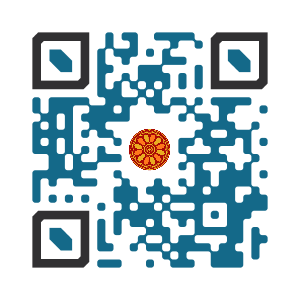
:: International Transaction Journal of Engineering, Management, & Applied Sciences & Technologies
http://TuEngr.com

ISSN 2228-9860
eISSN 1906-9642
CODEN: ITJEA8
FEATURE PEER-REVIEWED ARTICLES
Vol.11(12) (2020) |
-
IMPACTS OF INTELLECTUAL STIMULATION ON EMPLOYEES' INNOVATIVE BEHAVIORS: THE MEDIATING ROLE OF CONTINGENT REWARDS
 Irfan Ullah Khan (Department of Public Administration, Gomal University, Dera Ismail Khan, KP, PAKISTAN),
Irfan Ullah Khan (Department of Public Administration, Gomal University, Dera Ismail Khan, KP, PAKISTAN),
Saqib Khan (Department of Business Administration, Gomal University, Dera Ismail Khan, KP, PAKISTAN),
Haroon Rehan (Department of Public Administration, Gomal University, Dera Ismail Khan, KP, PAKISTAN),
Hamid Khan(Department of Business Administration, Gomal University, Dera Ismail Khan, KP, PAKISTAN).
Disciplinary: Management Science (Organizational Behavior).
DOI: 10.14456/ITJEMAST.2020.227
Keywords: Intellectual stimulation; Contingent incentives; Organizational behavior; Transactional leaders; Leadership practices; Employee's innovative performance; Stimulated behaviors; Fair rewards.
AbstractIn organizational behavior, the workforces' innovative behavior is a widely researched issue due to its meaningful relationship with various organizational outcomes. In the same way, effective behavior is an outcome of various dynamic issues among which the leadership behavior is worth mentioning. The leaders, over the intellectual stimulation, motivate and inspire their workforces to show their efforts and potentials by adapting innovative ways to achieve organizational objectives. The concerned workforces might be able to realize the said objective more effectively when they have justifiable insight about the provision of fair rewards. In this connection, this article aimed at exploring relationships among variables understudy in the context of higher educational institutions, KP, Pakistan. Applying the statistical procedures, this study provides significant evidence about the relationships among research variables which might be helpful for the institutional management in introducing suitable policies, programs, and practices for promoting the workforces' innovative behavior in higher institutions.Paper ID: 11A12B
Cite this article:
Khan, I.U., Khan, S., Rehan, H., Khan, H. (2020). IMPACTS OF INTELLECTUAL STIMULATION ON EMPLOYEES' INNOVATIVE BEHAVIORS: THE MEDIATING ROLE OF CONTINGENT REWARDS. International Transaction Journal of Engineering, Management, & Applied Sciences & Technologies, 11(12), 11A12B, 1-13. http://DOI.ORG/10.14456/ITJEMAST.2020.227
References:
Adalberto, A., & Ruben, M. (2002). Leadership practices and diversity in higher education. Journal of Leadership Studies, 8(3), 53-62.
Ali, J., Ullah, S., & Javed, B. (2017). Effect of leadership styles on employees' innovative behavior: The mediating role of employees' creativity. European Journal of Business and Management, 9(28), 27-37.
Aryee, F., Walumbwa, Z., & Hartnell, C. (2012). The transformational leadership, innovative behavior, and task performance: Test of mediation & moderation processes. Human Performance, 25(1), 1-25.
Atkinson, P., & Mackenzie, R. (2015). Without leadership there is no change. Management Services, 59(2), 42-47.
Avolio, B.J., Bass, B.M., & Jung, D.I. (1999). Re-examining the components of transformational & transactional leadership using multifactor leadership questionnaire. Journal of Occupational and Organizational Psychology, 2(4), 441-462.
Bass, B. M., & Avolio, B. J. (2004). Multifactor leadership questionnaire: manual and simpler set, 3rd Ed., Mind-garden, Redwood City, CA.
Bass, B. M., & Riggio, R. E. (2006). Transformational leadership. Mahwah, New Jersey 07430: Lawrence Erlbaum Associates, Inc.
Bosnehles, A., & Venendal, A. (2017). Perceptions of HR practices and innovative work behavior: The moderating effect of an innovative climate. International Journal of Human Resource Management, (1), 1-23.
Brahim, A., Riđić, O., & Tomislav, J. (2015). The effect of transactional leadership on employees' performance. Journal of Economics and Business, 13(2), 7-20.
Byron, K., & Khazanchi, S. (2012). Rewards and creative performance: A meta-analytic test of theoretically derived hypotheses. Psychological Bulletin, 138, 809-830.
Damanpour, F., & Schneider, M. (2009). Characteristics of innovation and innovation adoption in public organizations: Assessing the role of managers. Journal of Public Administration Research and Theory, 19, 495-522.
Diane, E., & Oliver, D. (2004). Higher Education Challenges in Developing Countries. International Journal of Educational Policy Research and Practice, 5(2), 3-18.
Elkins, T., & Keller, R. T. (2003). Leadership in research and development organizations: A literature review and conceptual framework. The Leadership Quarterly, 14(1), 587-606.
Faraz, N., Yanxia, C., Ahmed, F., & Raza, A. (2018). The influence of transactional leadership on innovative work behavior-a mediation model. European Journal of Business and Social Sciences, 7(1).
Ganga, M., Sikalieh, D., & Linge, T. (2017). The influence of intellectual stimulation leadership behavior on employee performance. International Journal of Business and Social Science, 8(3), 89-100.
Gilley, A., Dixon, P., & Gilley, J. W. (2008). Characteristics of leadership effectiveness: Implementing change and driving innovation in organizations. Human Resource Development Quarterly, 19(2), 153-169.
Gong, Y., Kim, T., & Lee, D. (2013). A Multilevel Model of Team Goal Orientation, Information Exchange, and Creativity the Hong Kong University of Science and Technology. Strategic Management Journal, 56(3), 827-851.
Gumusluoglu, L., & Ilsev, A., (2009). Transformational leadership, creativity, and organizational innovation. Journal of Business Research, 62, 461-473.
Hansen, J., & Thingvad, S. (2018). Managing employee innovative behavior through transformational and transactional leadership Styles. Public Management Review, DOI: 10.1080/14719037.2018.1544272.
Harari, M. B., Reaves, A. C., & Viswesvaran, C. (2016). Creative and innovative performance: A metaanalysis of relationships with task, citizenship and counterproductive job performance dimensions. European Journal of Work and Organizational Psychology, 25, 495-511.
Harland, L., Harrison, W., Jones, J., & Reiter Palmon, R. (2005), Leadership behaviors and subordinate resilience. Journal of Leadership and Organizational Studies, 11: 2-14.
Hughes, D., Lee, A., Tian, W., Newman, A., & Legood, A. (2018). Leadership, creativity, and innovation: A critical review and practical recommendations. The Leadership Quarterly, DOI: 10.1016/j.leaqua.2018.03.001.
Ismail, A., Mohamad, M., Mohamed, H., & Zhen, K. (2010). Transformational and transactional leadership styles as a predictor of individual outcomes. Theoretical & Applied Economics, 17(6), 89-104.
Jaiswal, N., & Dhar, L. (2015). Transformational leadership, innovation climate, creative self-efficacy, and employee creativity: A multilevel study. International Journal of Hospital Management, 51: 30-41.
Jiang, J., & Yang, B. (2015). Roles of creative process engagement and leader-member exchange in critical thinking and employee creativity. Social Behavior and Personality: An International Journal, 43, 1217-1231.
Jong, J. P., & Hartog, D. N. (2007). How leaders influence employees' innovative behavior. European Journal of innovation management, 10(1), 41-64.
Jong, J. P., & Hartog, D. N. (2008). Innovative work behavior: Measurement and validation. EIM Business and Policy Research, 1-27.
Jong, J., & Hartog, D. (2010). Measuring innovative work behavior. Creativity and Innovation Management, 19(1), 23-36.
Jung, D. I., Chow, C., & Wu, A. (2003). The Role of Transformational Leadership in Enhancing Organizational Innovation: Hypotheses and Some Preliminary Findings. Leadership Quarterly, 14, 525-44.
Kahai, S.S., Sosik, J. J., & Avolio, B. J. (2003). Effects of leadership style, anonymity, and rewards on creativity-relevant processes and outcomes in an electronic meeting system context. The Leadership Quarterly, 14(4), 499-524.
Khan, M. J., Aslam, N., & Riaz, M. (2012). Leadership Styles as Predictors of Innovative Work Behavior. Pakistan Journal of Social and Clinical Psychology, 9 (2), 17-22.
Limsila, K. S., & Ogunlana, O. (2008). Performance and leadership outcome correlates of leadership styles and subordinate commitment. Engineering, Construction, and Architectural Management, 15(2), 164-184.
Majumdar, B., & Ray, A. (2018). Transformational Leadership and Innovative Work Behavior. Journal of Indian Academy of Applied Psychology, 37(1), 140-148.
Malik, M.R., Butt, A.N., & Choi, J.N. (2015). Rewards and employee creative performance: Moderating effects of creative self-efficacy, reward importance, and locus of control. Journal of Organizational Behavior, 36(1), 59-74.
Maryam, M., Suandi, T., Silong, D., & Omar, Z. (2013). Transformational and transactional leadership styles and job performance of academic leaders. International Education Studies, 6 (11), 29-34. Muhammad, A., & Kuchin, P. (2016). Impact of leadership styles on employees' attitude towards their leader and performance. Future Business Journal, 54-64.
Mumford, M.D., & McIntosh, T. (2017). Creative thinking processes: The past and the future. Journal of Creative Behavior, 51(4), 317-322.
Muzafary, S., Chen, Z., Wafayar, Z., & Wahdat, N. (2019). The Influence of Transformational Leadership on Employees Innovative Work Behavior. International Journal of Academic Management Science Research, 3(1), 22-28.
Odumeru, A., & Ogbonna, I. (2013). Transformational vs. Transactional Leadership Theories: Evidence in Literature. International Review of Management and Business Research, 2(2).
Oke, A., Munshi, N., & Walumbwa, F.O. (2009). The influence of leadership on innovation processes and activities. Organizational Dynamics, 38(1), 64-72.
Pieterse, A., & Knippenberg, N. (2010). Transformational and transactional leadership and innovative behavior: The moderating role of psychological empowerment. Journal of Organizational Behavior, 623 (1), 609-623.
Qi, L., Liu, B., Wei, X., & Hu, Y. (2019). Impact of inclusive leadership on employee innovative behavior: Perceived organizational support as a mediator. PLoS ONE 14(2): e0212091. DOI: 10.1371/journal.pone.0212091
Rafferty, A. E., & Griffin, M. A. (2004). Dimensions of transformational leadership: Conceptual and empirical extensions. The Leadership Quarterly, 15(3), 329-354.
Ramamoorthy, N., Flood, P., Slattery, T., & Sardessai, R. (2005). Determinants of innovative work behavior: Development and test of an integrated model. Creativity and Innovation Management, 14(2), 142-150.
Rank, J., Pace, V., & Frese, M. (2004). Three avenues for future research on creativity, innovation, and initiative. Applied Psychology, 53(4), 518-528.
Ryan, J. C., Awais, S., & Tipu, A. (2012). Transformational Leadership in Pakistan: An Examination of the Relationship of Transformational Leadership to Organizational Culture and Innovation Propensity. Journal of Management & Organization, 10(2), 1-29.
Ryan, K., & Herman, A. (2017). Leadership behaviors and follower performance: Deductive and inductive examination of theoretical rationales and underlying mechanisms. Journal of Organizational Behavior, 38, 558-591.
Scott, S. U., & Bruce, R. A. (1994) Determinants of Innovative Behavior: A Path Model of Individual Innovation in the Workplace. Academy of Management Journal, 37, 580-607.
Sethibe, T., & Steyn, R. (2017). The impact of leadership styles and the components of leadership styles on innovative behavior. International Journal of Innovation Management, 21(2).
Shalley, C. E., & Zhou, J. (2008). Organizational creativity research: A historical overview. In J. Zhou, & C. E. Shalley (Eds.). Handbook of organizational creativity, 95-123. New York: Taylor and Francis.
Strauss, K., & Parker, S. (2014). Effective and Sustained Proactivity in the Workplace: A SelfDetermination Theory Perspective. Current Directions in Psychological Science, 66(6), 158-185.
Turunc, O., Celik, M., Tabak, A., & Kabak, M. (2010). The impact of transformational leadership and contingent reward leadership styles on innovative behavior: Mediating role of leader-member exchange quality. International Journal of Business and Management Studies, 2(1), 69-79.
Walumbwa, F.O., Wu, C., & Orwa, B. (2008). Contingent reward transactional leadership, work attitudes, and organizational citizenship behavior. Leadership Quarterly, 19(3), 251-265.
Wang, F., Fang, Y., Qureshi, I., & Janssen O. (2015). Understanding employee innovative behavior: Integrating the social network and leader-member exchange perspectives. Journal of Organizational Behavior, 36(3), 403-420. Yamane, T. (1967). Statistics: An Introductory Analysis. 2nd Ed., New York: Harper and Row.
Zhang, X., & Zhou, J. (2014). Empowering leadership, uncertainty avoidance, trust, and employee creativity: Interaction effects and mediating mechanism. Organizational Behavior and Human Decision Processes, 124, 150-164.
Other issues:
Vol.11(8)(2020)
Vol.11(7)(2020)
Vol.11(6)(2020)
Vol.11(5)(2020)
Vol.11(4)(2020)
Vol.11(3)(2020)
Vol.11(2)(2020)
Vol.11(1)(2020)
Archives
Call-for-Papers
Call-for-Scientific PapersCall-for-Research Papers: ITJEMAST invites you to submit high quality papers for full peer-review and possible publication in areas pertaining engineering, science, management and technology, especially interdisciplinary/cross-disciplinary/multidisciplinary subjects.
To publish your work in the next available issue, your manuscripts together with copyright transfer document signed by all authors can be submitted via email to Editor @ TuEngr.com (no space between). (please see all detail from Instructions for Authors)
Publication and peer-reviewed process:
After the peer-review process (4-10 weeks), articles will be on-line published in the available next issue. However, the International Transaction Journal of Engineering, Management, & Applied Sciences & Technologies cannot guarantee the exact publication time as the process may take longer time, subject to peer-review approval and adjustment of the submitted articles.